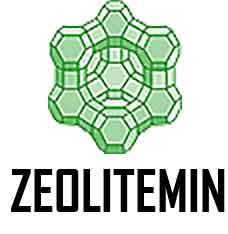Radioactive Waste Encapsulation
Zeolite is used as Animal Feed Additive for Poultry,that increased feed efficiency and decreases ammonia levels in the poultry houses
Natural Zeolite - Radioactive Waste Encapsulation
Managing Waste
One of the largest challenges facing the nuclear industry is managing waste that has the potential to pollute the environment and transfer toxins to soil-plant-animal food chains. For years, cement has been used for the encapsulation of radioactive wastes because it is inexpensive, can be easily prepared in remote locations, and can penetrate complex waste shapes (Milestone, 2006).

Cement also assist in the immobilization of radionuclides by acting as a diffusion barrier, providing sorption and reaction sites, and maintaining a high pH, which in turn decreases radionuclide solubility (Milestone, 2006). However, reactions that occur between radioactive waste and cement used for encapsulation can compromise the integrity of the wasteform (Milestone, 2006).
Encapsulation of Zeolite
Natural zeolite is often used to limit the environmental impact of radioactive waste. Historical applications include limiting the impact of the Three Miles Island and Chernobyl nuclear accidents, removing radioactive cesium and strontium isotopes from nuclear industry effluents, and decontaminating water (Misaelides, 2011). Since 1985, the Sellafield Ion Effluent Plan has used clinoptilolite to reduce the levels of cesium and strontium discharged into the Irish Sea.
Leaching is a large challenge linked to radioactive waste encapsulation. Studies have found that improving pore structures is one method to contain waste in a solid structure. For example, Bagosi (2006) conducted an experiment with a cement and natural zeolite blend to prevent cesium leaching. The results indicated that the addition of zeolite decreased cesium release by up to 75 percent over the course of a three-year period.
Li & Wang (2005) studied the effects of zeolite on the strength, hydration heat, and leaching rates of the resin cementation matrix. After a simulated leaching test, they determined that the inclusion of zeolite in cement reduced the leaching rates of radionuclides significantly. They concluded that zeolite is a supplement that supports cement matrix stability and can significantly reduce leaching rates. Zeolite as a molecular sieve is a natural mineral.
Benefits of UZ-Min Clinoptilolite Zeolite on Radioactive Waste Encapsulation
- Absorbs and immobilizes of radioactive cations like cesium (Cs) and strontium (Sr)
- Proven radiation and thermal resistance
- Binds radioactive cations in nuclear wastewater and polluted soils
- Highly compatible with cement encapsulation methods
- Prevents leaching of contaminants back into the environment
- Prevents the corrosion of cement matrices created during encapsulation
